New exposé reveals carbon dating labs’ — and Church’s — errors and contradictions
By Jim Bertrand
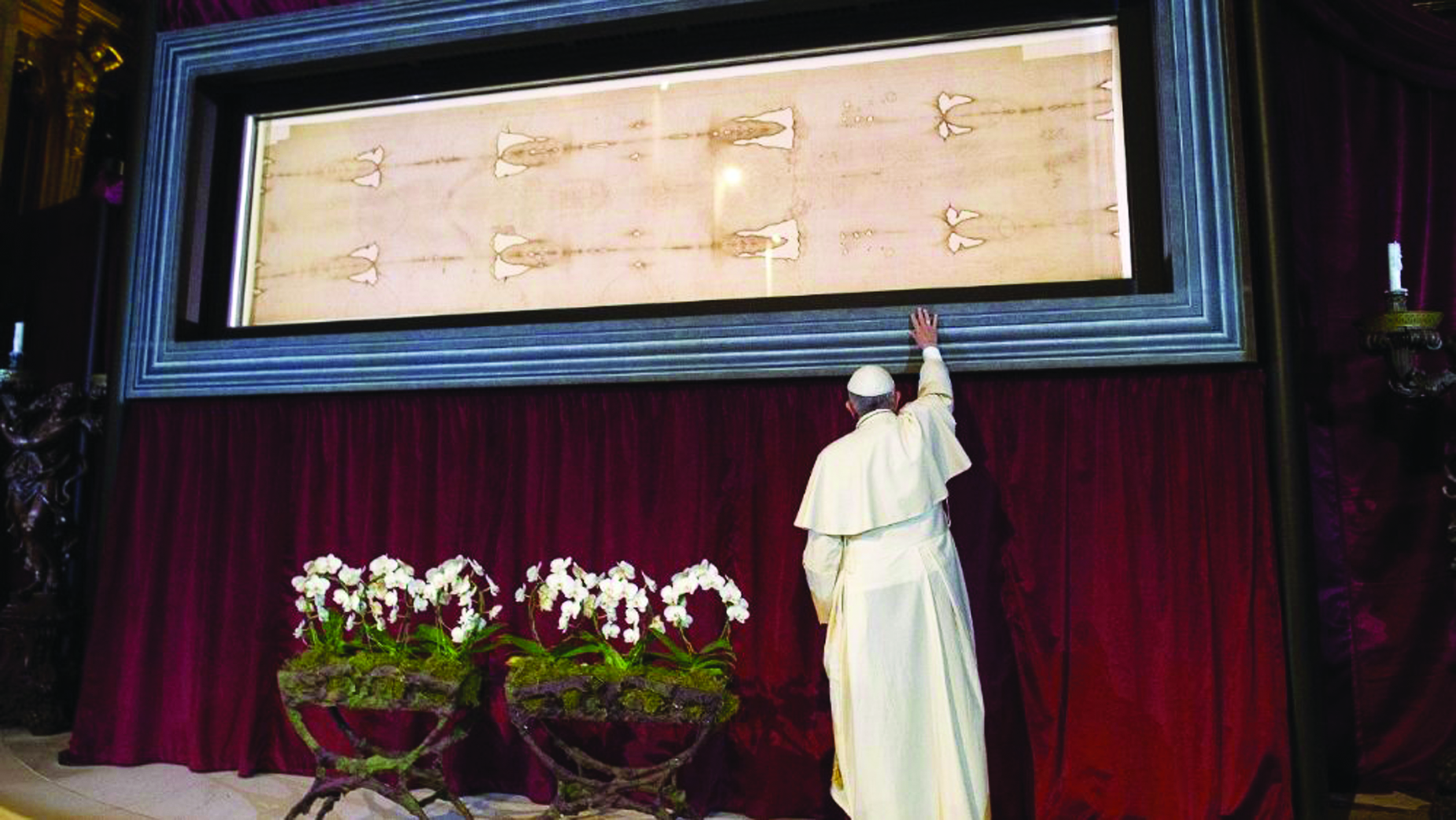
Pope Francis prays before the actual Shroud of Turin during a showing in Turin in 2015
Longtime Shroud of Turin researcher Joseph Marino has just released his latest book in which he has compiled the most comprehensive collection of data on the 1988 Carbon-14 dating test conducted on the mysterious linen which many believe to be the burial cloth of Jesus of Nazareth.
Released last November, The 1988 C-14 Dating of the Shroud of Turin: A Stunning Exposé includes data from many rare documents and correspondences.
One of the most important sources was the archive of the late Professor Luigi Gonella, who was the scientific adviser to the late Anastasio Ballestrero, the Cardinal of Turin.
The 800-page book reveals numerous questionable actions, errors and contradictions by both the Catholic Church and the C-14 labs before, during and after the taking of the sample on April 21, 1988. The contradictions included multiple versions of the sizes and weights of the chosen samples.
Marino, a former Benedictine monk who has studied the Shroud for 43 years, is the author of Wrapped Up in the Shroud: Chronicle of a Passion, originally published by Cradle Press in 2011 and revised and updated in 2020. He has written and lectured extensively on the Shroud since 1980.
It is well known that the Shroud has undergone several repairs throughout history, including after a fire in 1532. The Shroud was owned in the 1500s by Margaret of Austria, Duchess of Savoy, whose weavers were experts in the technique known as “French invisible reweaving.”
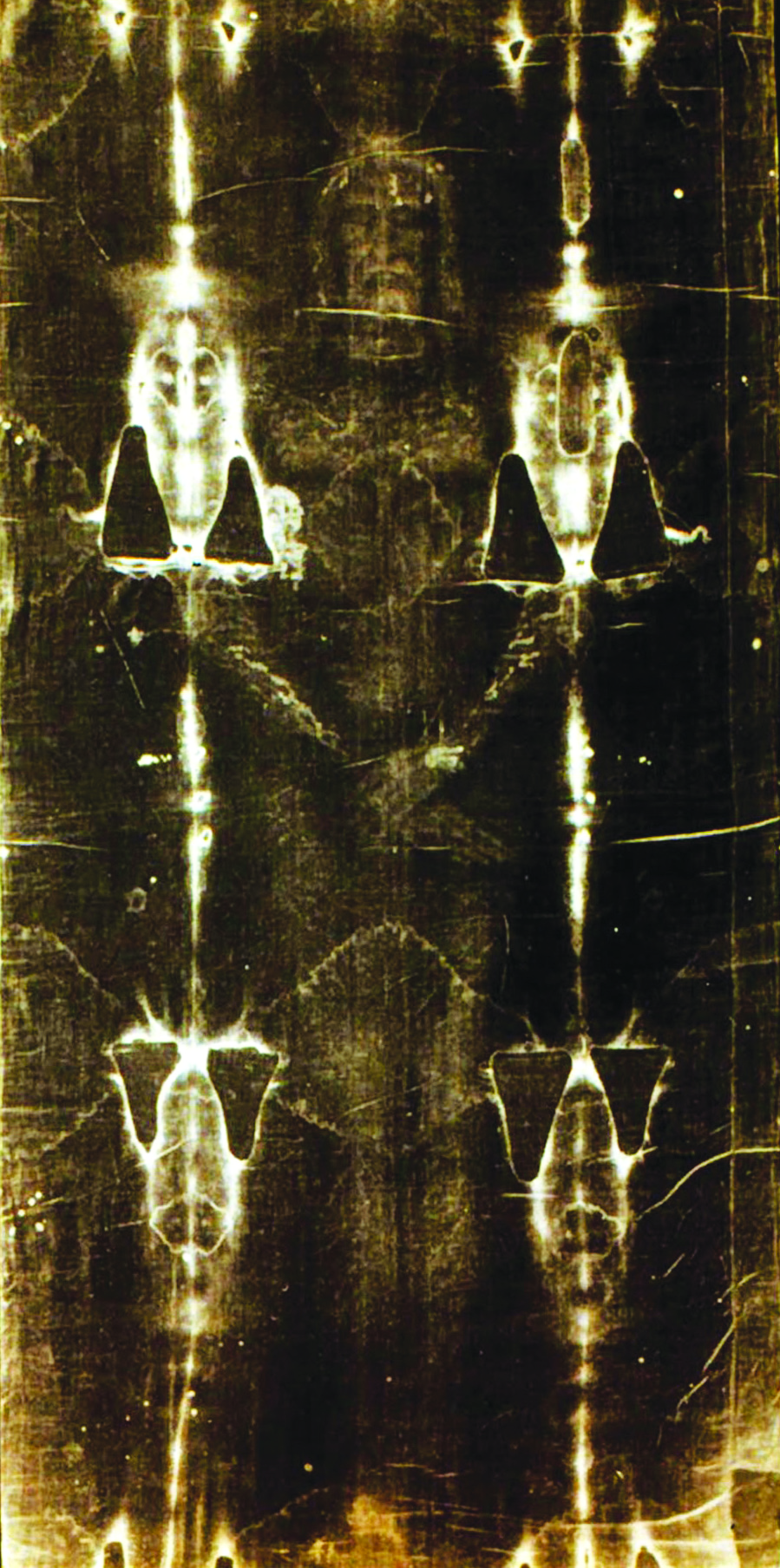
The negative of a photo of the Shroud. It reveals in the clearest way the image left on the cloth, which is visible but less so in a positive photograph.
In 1978, a team of elite American scientists, who worked primarily in U.S. nuclear and space programs, collaborated to form the Shroud of Turin Research Project (STURP). For five consecutive 24-hour days, they used the latest technology to study the front and back images of a crucified man, who exhibited the same wounds as described in the New Testament Gospels.
The STURP team concluded that the images were not the product of an artist. However, just how the mysterious images were imprinted on the fabric remained unsolved.
In 1988, the Shroud was dated using C-14 by three well-known labs at the University of Oxford, the University of Arizona, and the Swiss Federal Institute of Technology in Zurich. Scientists reported in the journal Nature in February 1989 that their combined results dated the cloth to AD 1260-1390 with a supposed confidence level of 95 percent. The results convinced many people around the world that the Shroud was nothing more than an elaborate medieval forgery.
Marino felt pressed to further investigate. He had already studied the Shroud extensively for 11 years and was familiar with scientific and historical evidence which contradicted the C-14 result.
Working alongside his late wife Sue Benford, he found anomalies in the weave pattern in the sample which had been dated. Further research into these anomalies led to the publication of their hypothesis that suggested the C-14 labs had mistakenly carbon-dated a repaired portion of the Shroud that mixed in newer fibers with old, therefore skewing the results of the carbon date.
The late STURP chemist Raymond Rogers, who first called Marino and Benford part of the “lunatic fringe,” analyzed their hypothesis, and to his surprise, admitted they were probably right. After being given an actual leftover sample from the 1988 dating, he confirmed the hypothesis. In 2005, he authored a paper in the peer-reviewed scientific journal Thermochimica Acta. He concluded that the C-14 sample was not representative of the main cloth, thus invalidating the results.
The raw data from the three labs, which the labs, against all norms, refused to release immediately, were finally obtained through a Freedom of Information request in 2017. Careful analysis of that data supports the notion that the Shroud sample dated in 1988 was a combination of 1st-and 16th-century cloth.
Marino has continued to study the Shroud for the 32 years since the C-14 test. Like Chris Parker writes in his novel, Monk, Marino believes that if the Shroud is genuine, it “is quite simply the most important and valuable object on the planet,” since “it is as close as we could ever come to proving that the death and resurrection of Jesus are historical facts.”
Marino says his book points to irrefutable proof that politics — along with personal agendas — was the main theme of the C-14 dating of the Shroud.
“We can continue to hope that the Catholic Church will in the near future allow some new testing,” Marino said, “so that we can learn all we can about this enigmatic cloth and the person who was wrapped in it.”
Author Cites “Appalling Lack Of Scientific Rigor”
“There is a very good chance that this cloth actually wrapped the body of Jesus”

Joseph Marino
Author Joseph Marino was recently interviewed by Inside the Vatican special correspondent Jim Bertrand, a retired science teacher and expert on the Shroud of Turin in his own right, who has lectured on the Shroud more than 200 times in the past six years.
Inside the Vatican: You have been an avid Shroud researcher for decades. What makes this topic of the 1988 carbon dating test so significant for you?
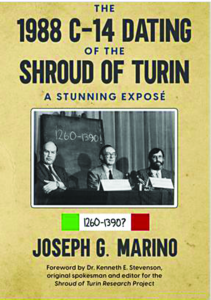
The cover of Marino’s new book on the various errors made in attempting to date the Shroud
JOSEPH MARINO: The overall accuracy of the C-14 test is generally overblown by the C-14 community and in the perceptions of the public. The C-14 test is generally utilized as a confirmatory test, used in conjunction with other data points. If the results match with other data points, it’s a strong indication that the dating assigned is correct. If it doesn’t match with other data points, it is often discarded, even if it is not known why the date was apparently inaccurate. Most people are unaware of how often rogue dates are produced in various datings. There was even an instance in the 1980s where an object was dated into the future! Given all the previous testing on the Shroud that seemed to indicate it was an ancient Jewish burial cloth, the medieval dating of the Shroud did not match most of the other data points. In most cases of this nature, the C-14 date would have been thrown out; but in this case the opposite happened — all of the other data indicating authenticity was thrown out. And there’s no doubt this happened because it is claimed to be burial cloth of Jesus. That’s a scenario that scares a lot of people, and I believe it affects scientific objectivity. That lack of objectivity was exhibited before, during, and after the process, as documented in my book.
What are some things we know now about the carbon dating test of 1988, that we didn’t know a few years ago?
MARINO: There were at least nine major groups involved in the dating—a good example of “too many cooks spoil the broth.”
Much great advice by archaeologists William Meacham and Paul Maloney and blood chemist Dr. Alan Adler was ignored, especially in terms of where the sample should be taken.
Cardinal Ratzinger (later Pope Benedict XVI) had approved in July 1985 the Shroud of Turin Research Project (STURP) getting two weeks, not one, to do their proposed test package of 26 tests, which included C-14. Ratzinger was one of the highest ranking prelates in the Vatican, yet someone or some group was able to go over his head [and limit the testing to one week].
Dr. Harry Gove, co-inventor of the C-14 method used on the Shroud, believed STURP was a bunch of religious zealots and was successful at getting STURP eliminated not only from the C-14 test, but getting their other 25 multi-disciplinary tests eliminated as well.
Gove was in a cabal with Prof. Chagas of the Pontifical Academy of Sciences and his right-hand man, Dr. Victor Canuto, according to Cardinal Ballestrero of Turin, who openly expressed concerns about these three. (Was it this group that somehow managed to go over Ratzinger’s head?)
There were many discrepancies in some basic measurements, such as the size and weights of the samples.
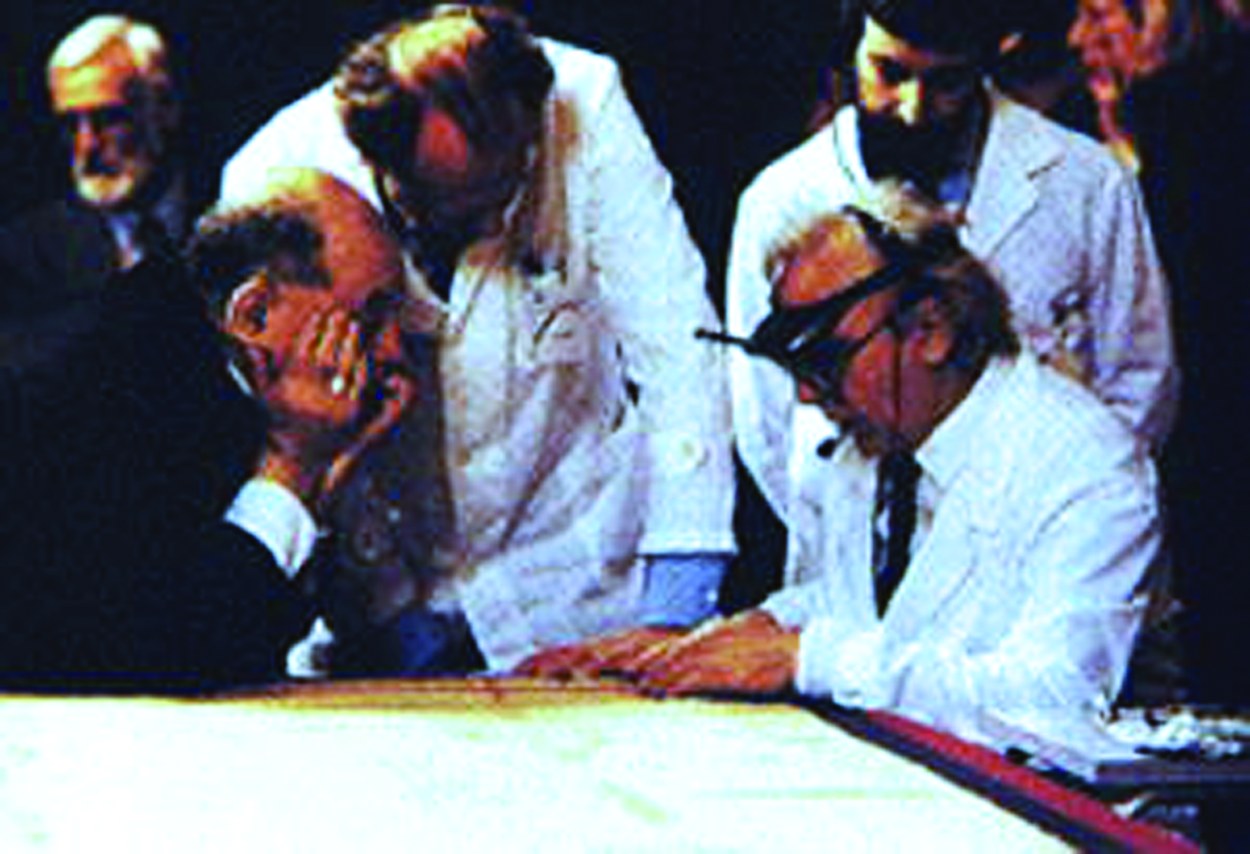
Cardinal Ballestrero of Turin, custodian of the Shroud, was present when the samples of the cloth to be dated were chosen in April of 1988.
“There was an appalling lack of rigor in the 1988 testing… There is a very good chance that this cloth actually wrapped the body of Jesus”
Can you give us a brief summary of how the Freedom of Information law was invoked to release the “raw data” that was lacking in the original carbon dating paper in Nature magazine back in early 1989?
MARINO: A French researcher named Tristan Casabianca in 2017 sued the British Museum through the British Freedom of Information Act to get access to that raw data, which normally is released immediately after a scientific test. The fact that the three labs involved refused to release the data immediately is suspicious at best. Casabianca and several Italian researchers then authored a 2019 peer-reviewed article in the journal Archaeometry, ironically published by Oxford, one of the three labs to have dated the Shroud. They concluded: “A statistical analysis of the Nature article and the raw data strongly suggests that homogeneity is lacking in the data and that the procedure should be reconsidered.”
Would it be safe to say that in the scientific world, the carbon dating test of 1988 has been invalidated? Do you think the general population is aware of this?
MARINO: It’s all somewhat of a mixed bag. Many scientists, researchers, and many members of the general population can be biased against the Shroud’s authenticity because of philosophical or religious reasons and basically still accept the 1988 results without delving into it further. I’ve offered a free PDF of my book to a few skeptics and have not had any of them take me up on it. On the other hand, when one reads Shroud articles and blogs, it seems clear that many people are at least aware that there are valid scientific reasons for rejecting the dates.
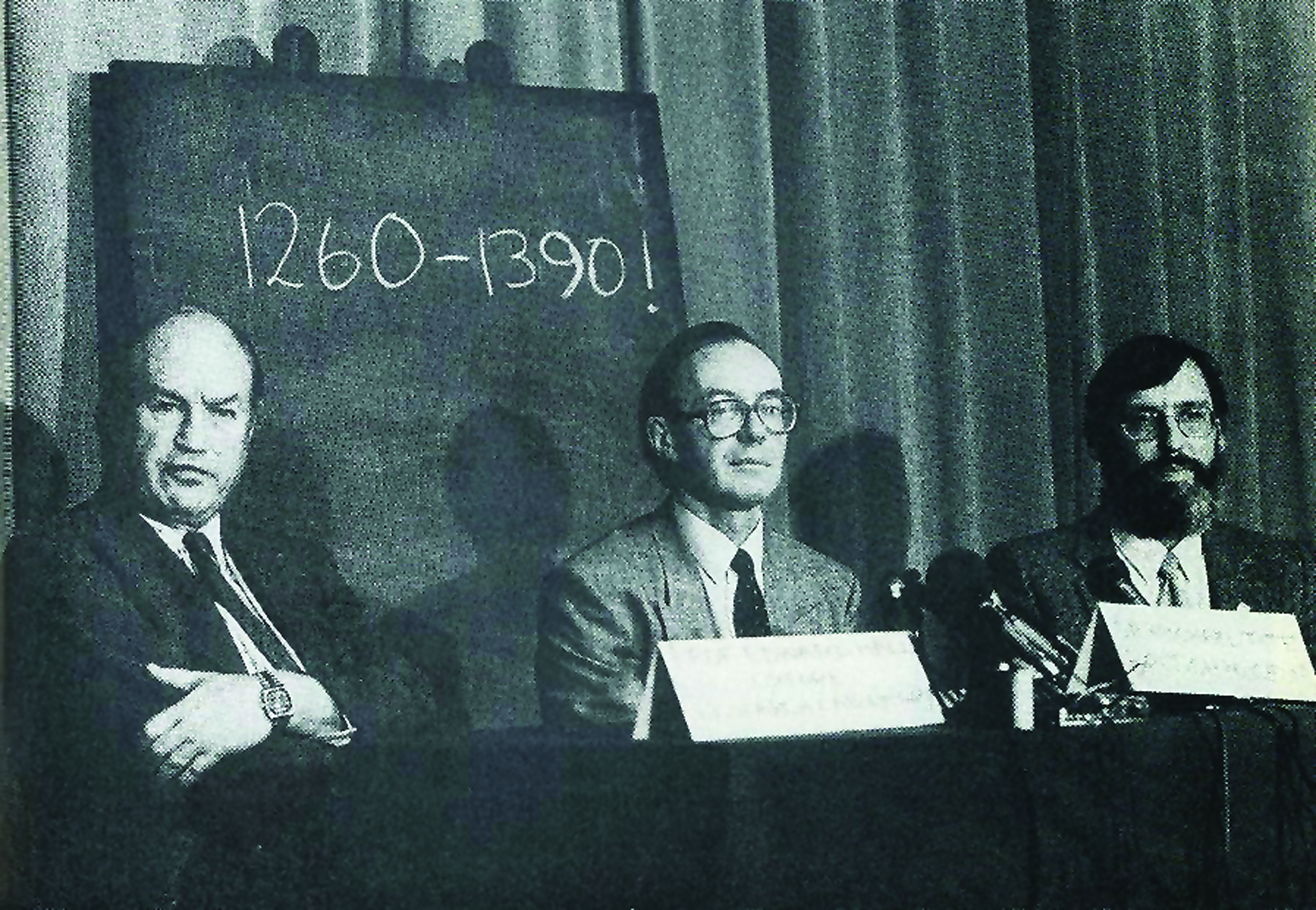
E. Hall, M. Tite and R. Hedges at the British Museum on October 14, 1988
In 1988, scientists dated the cloth of the Shroud of Turin to the years “1260 to 1390,” that is, not from the first century, so they said it could not be the burial shroud of Christ
How can the general population be “brought up to speed” so they become aware that the 1988 carbon testing was invalid?
MARINO: People need to make sure they’re getting accurate information from reliable sources. The absolutely best source is https://www.shroud.com/, published and edited by a Jewish man named Barrie Schwortz, who was the documenting photographer on the 1978 STURP team. The site contains both pro and con views about the Shroud’s authenticity and includes high-end, peer-reviewed scientific papers, as well as some of the more basic treatments of the Shroud both in print and on video.
If we don’t know the “contamination cause” of the 1988 carbon dating discrepancies between the three labs, how could a future carbon dating test be immune from getting similar results?
MARINO: In my opinion, if another C-14 test is done, it should only be done in the context of multi-disciplinary tests, which were supposed to have been done in 1988 but were successfully jettisoned by the C-14 contingent. The multi-disciplinary tests would give the best chance of making a wise scientific determination about the Shroud, an object with a myriad number of factors that possibly make it unsuitable for a C-14 test, which, as I said previously, should be considered a confirmatory test and not a standalone one.
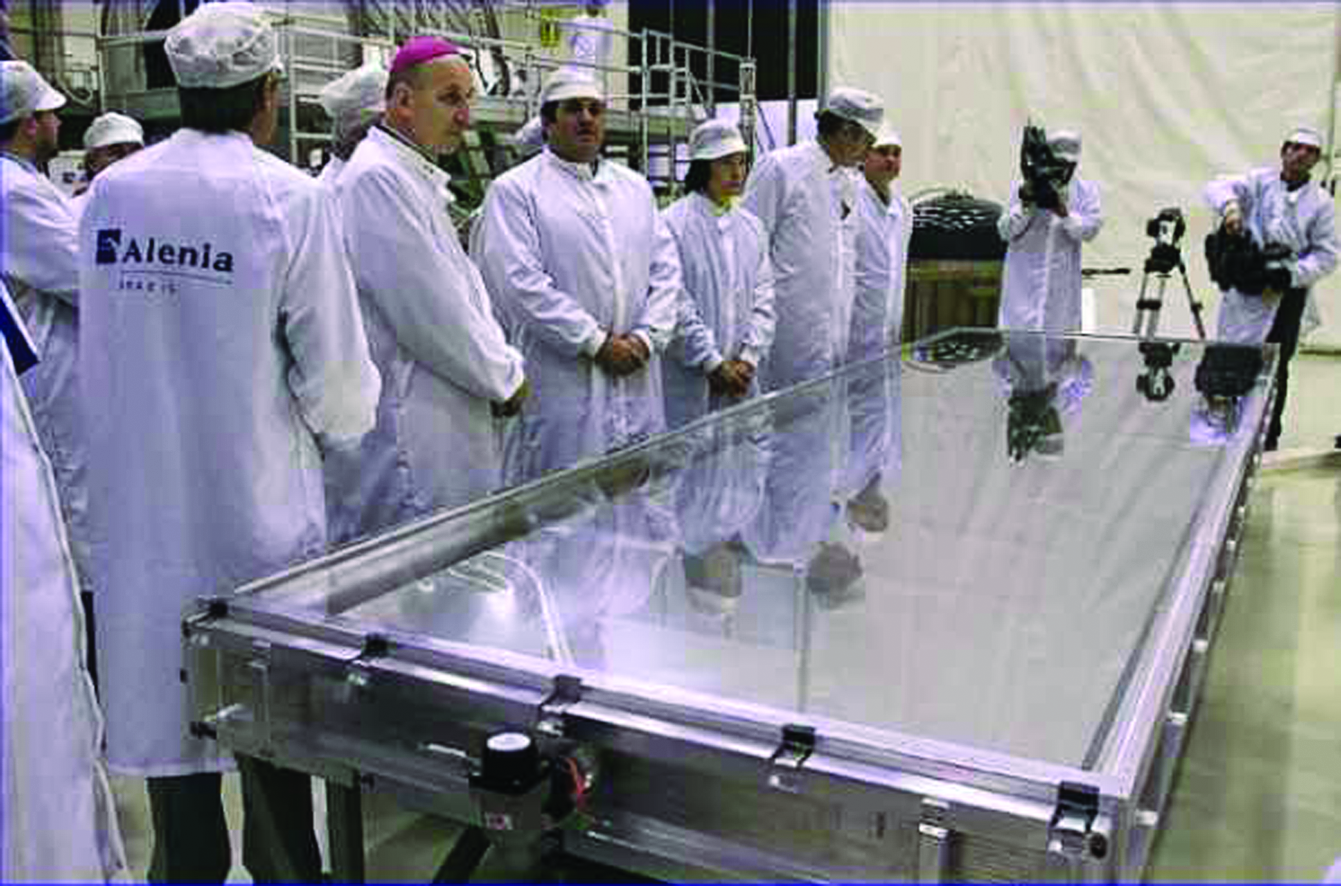
Cardinal Poletto inspected the special case created by an aerospace company for the conservation of the Shroud.
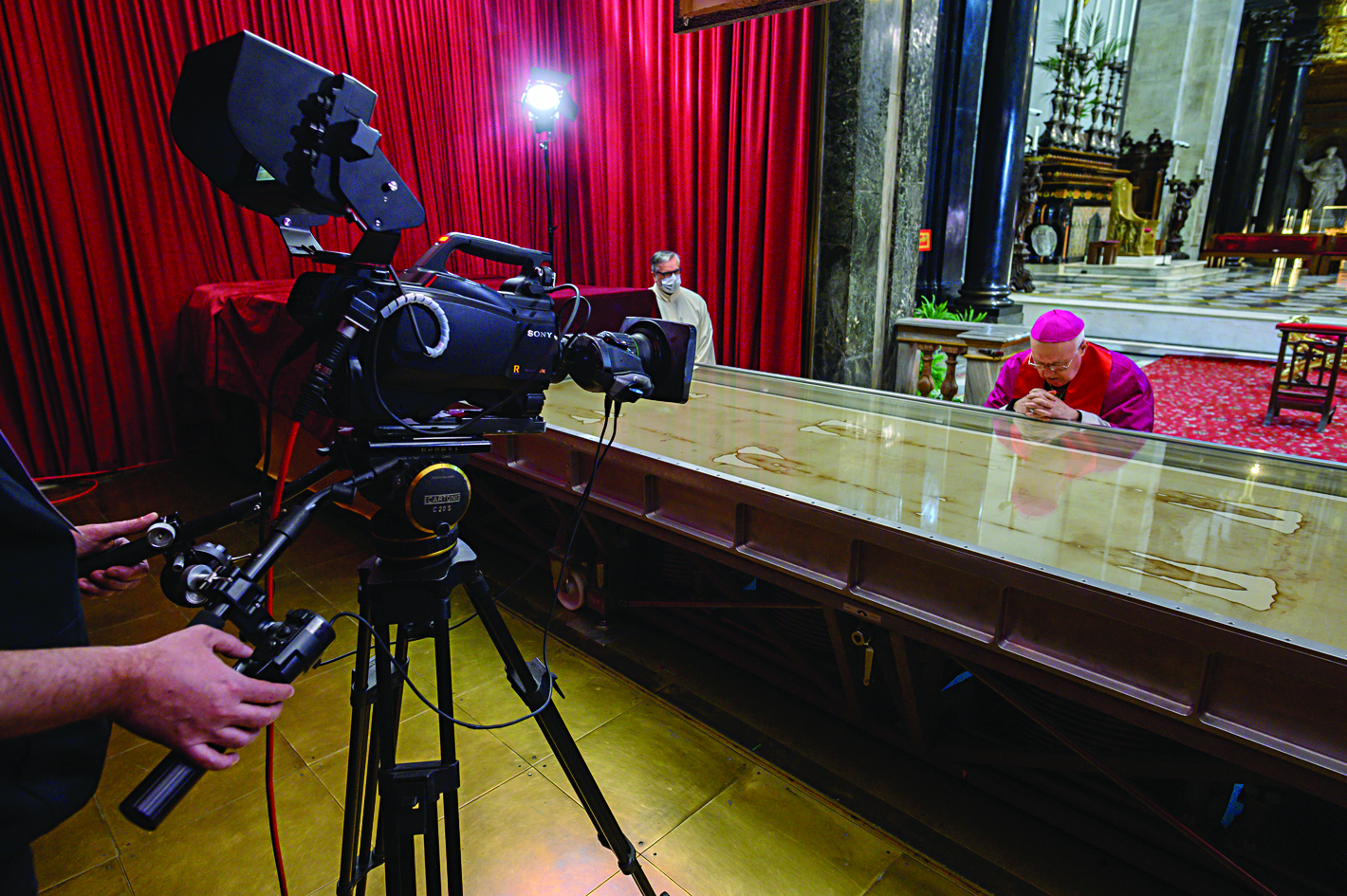
On Holy Saturday, April 3, 2021, in Turin’s cathedral, Archbishop Cesare Nosiglia prayed in front of the Shroud before television cameras
Dr. Gulio Fanti of Italy co-authored a book with Pierandrea Malfi entitled The Shroud of Turin: First Century After Christ (2nd Edition, 2020) which uses three other dating methods to date the Shroud. These all converge on the 1st century. Could these measurements be used in place of another carbon dating test?
MARINO: I have read that those methods are considered by most mainstream scientists not to be reliable as they relate to dating textiles. Perhaps over time that will change.
In a best-case scenario, how would you envision this information from your book being brought to light to the world at large and what would be the benefits of having this better known?
MARINO: Anyone who reads the book will see that there was an appalling lack of scientific rigor in the 1988 testing. That being the case, there’s a very good chance that this cloth actually wrapped the body of Jesus after his crucifixion. Since the Church’s mission is to bring people to Jesus, the Shroud could be an enormous tool for that purpose. They really have an obligation to seek out the truth about this cloth. Since the book documents that the C-14 dating is likely invalid, it’s my hope that the Church will allow additional multi-disciplinary testing in order to better disseminate knowledge about this mysterious cloth. I arranged to have a copy of my book sent to Pope Francis.
“It’s my hope that the Church will allow additional multi-disciplinary testing in order to better disseminate knowledge about this mysterious cloth.”
Your book devotes some 800 pages to this topic, so we have barely scratched the surface. What else would you like to add here for the benefit of our readers?
MARINO: I used 17 major sources in my book — this is the most comprehensive treatment out there of the dating project. I wasn’t sure I would do a second edition of the book, so I set up a page on my website dedicated to additions and corrections for the book. It’s set up in the same format as the book, and I’ve already added close to 70 entries. It contains a wealth of information and includes links to many interesting sources and can basically be read as a condensed, stand-alone source. The URL is: https://newvistas.homestead.com/The-1988-C-14-Dating-of-the-Shroud-of-Turin–a-Stunning-Expos-.html/

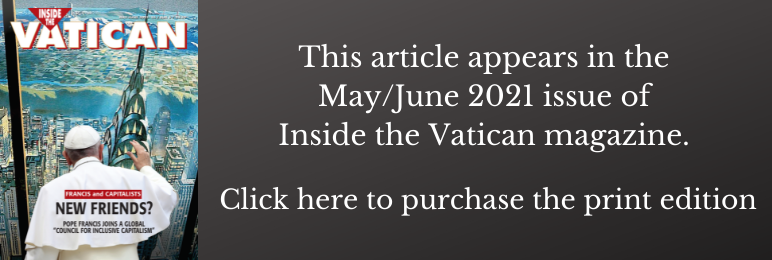





Facebook Comments